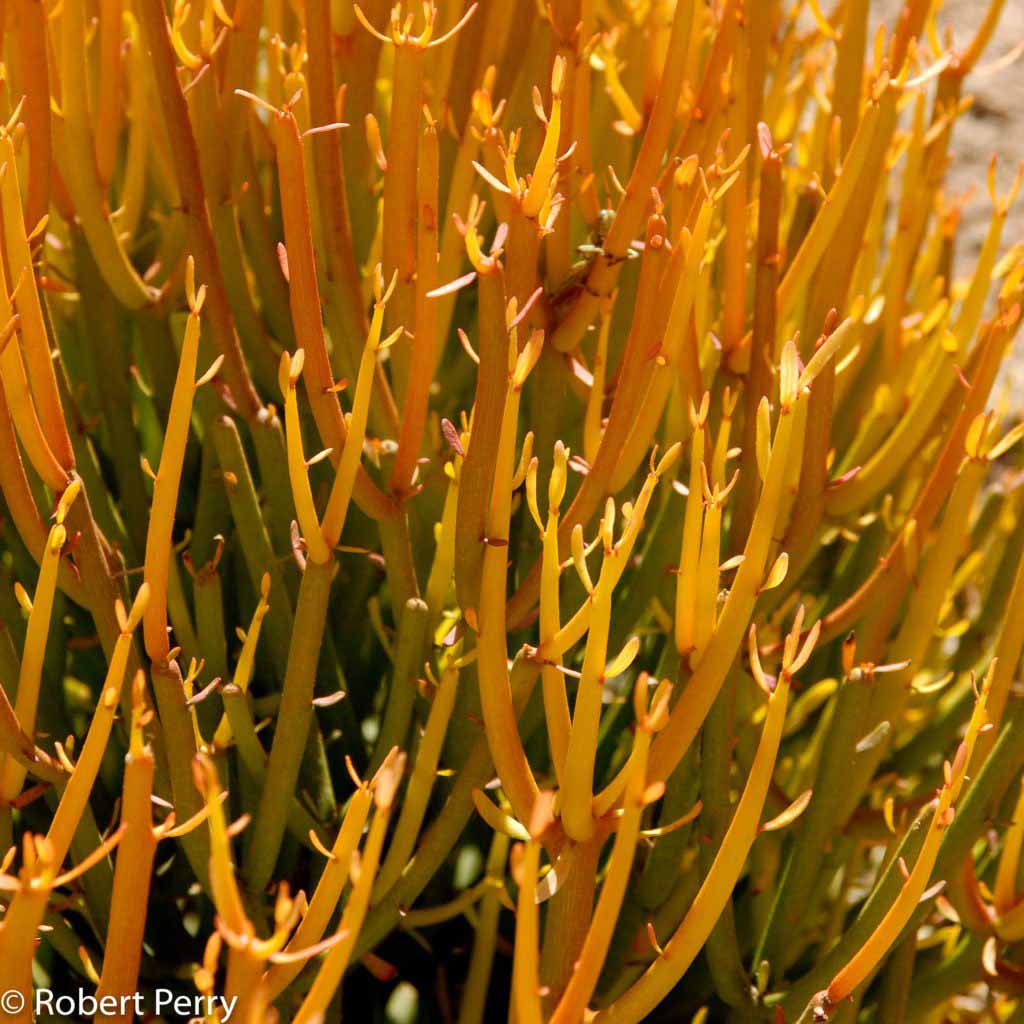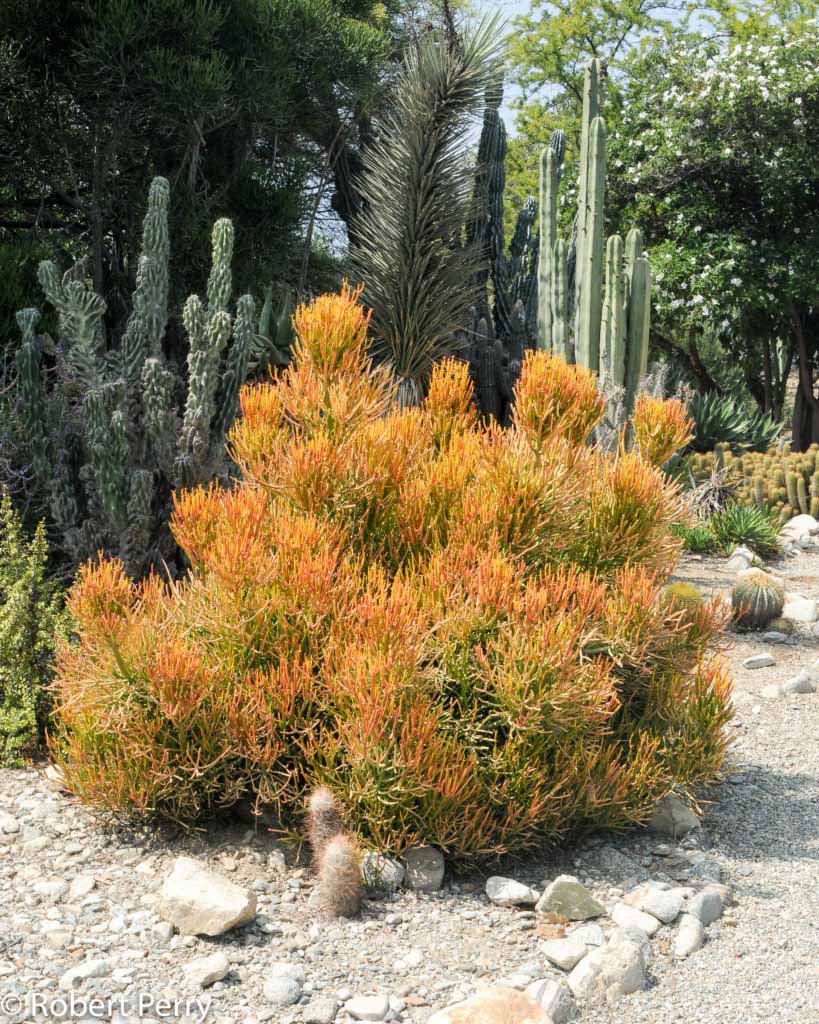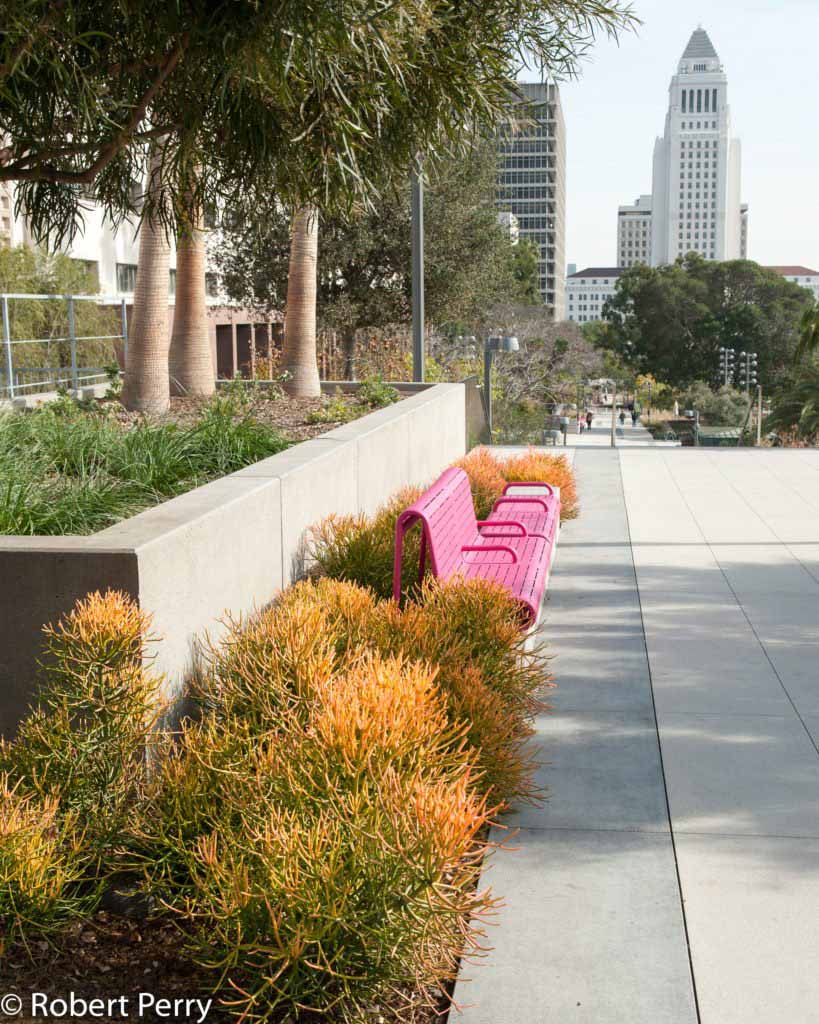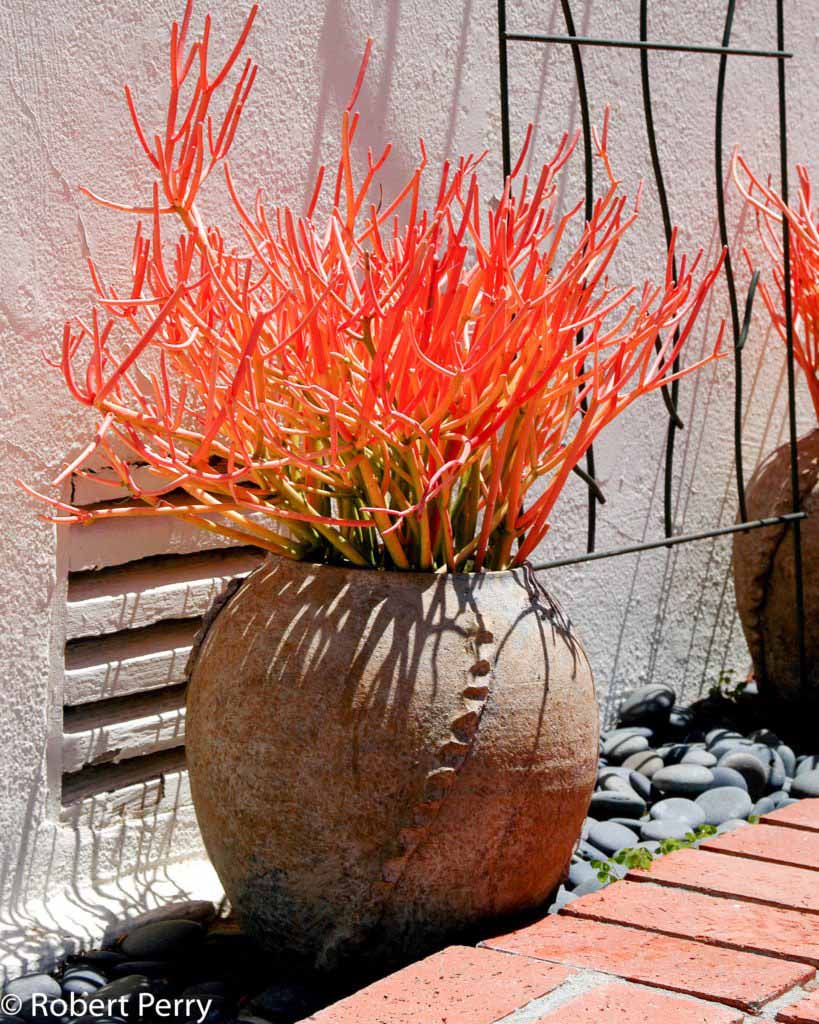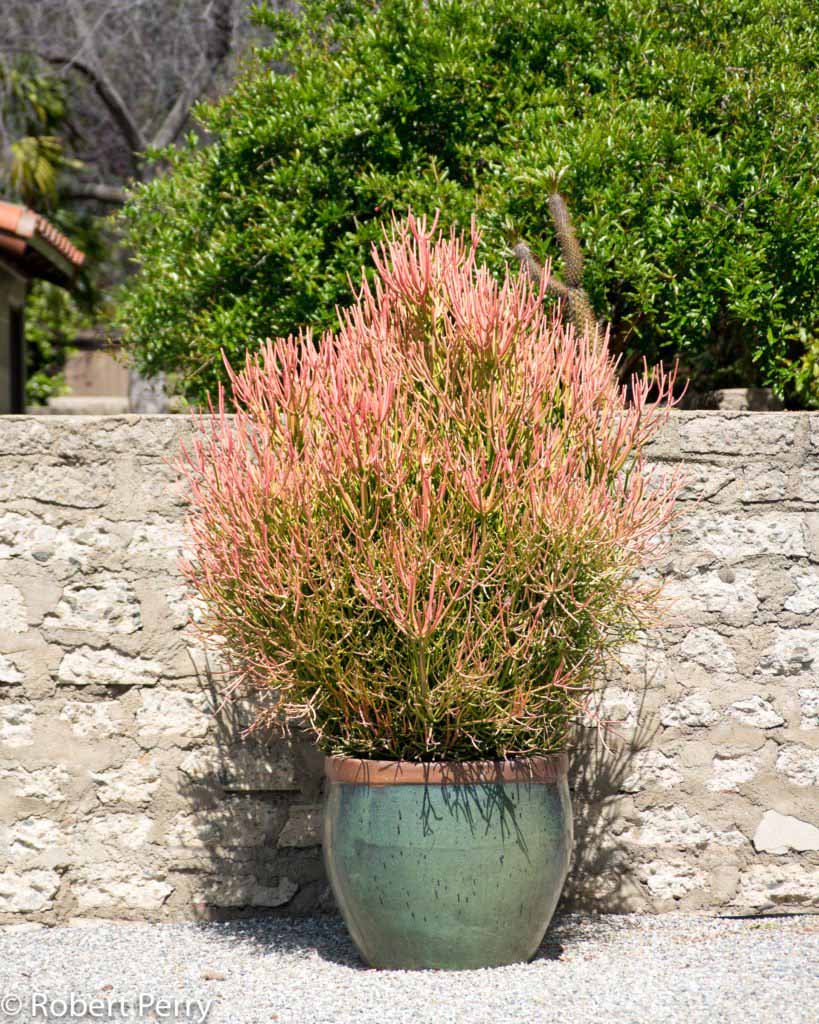This is a popular container plant, as a focal element in succulent gardens, on banks and southwestern style plantings. Young plants are tender to frost and do best in warm and sunny microclimates. Like other Euphorbias, E. t. ‘Sticks on Fire’, has a poisonous sap that drips from cut stems and care must be taken when trimming this plant, including the use of protective eyewear.
Sticks on Fire
Euphorbia tirucalli ‘Sticks on Fire’
Description
Plant properties
Water needs
Maintenance
Plant Type: Succulent
Foliage Character: Evergreen
Habit: Upright, Rigid, Open, Multi-trunk, Irregular branching
Growth Rate: Moderate
Foliage Color: Red, Orange
Flower Color: Insignificant
Flower Season: Spring
Soil Adaptations: Well-draining soil
Exposure Adaptations: Partial sun, Morning sun, Heat, Drought, Aridity, All day sun
Function: Residential spaces, Raised planters, Foliage accent plant, Container plant, Banks, Background plant, Specimen
Height: 4 ft. – 8 ft.
Width: 3 ft. – 5 ft.
Foliage Character: Evergreen
Habit: Upright, Rigid, Open, Multi-trunk, Irregular branching
Growth Rate: Moderate
Foliage Color: Red, Orange
Flower Color: Insignificant
Flower Season: Spring
Soil Adaptations: Well-draining soil
Exposure Adaptations: Partial sun, Morning sun, Heat, Drought, Aridity, All day sun
Function: Residential spaces, Raised planters, Foliage accent plant, Container plant, Banks, Background plant, Specimen
Height: 4 ft. – 8 ft.
Width: 3 ft. – 5 ft.
Sticks on Fire is well adapted to all parts of the Inland Empire in sunny exposures with normal winter rains and low amounts of summer irrigation. The chart shown below provides a recommended baseline guide to the monthly irrigation schedule and volume of supplemental water needed to maintain healthy growth throughout the average year. It should be noted there are several months marked by an asterisk (*) when winter rains often provide sufficient moisture and irrigation is not needed. The high and low range of moisture indicates Sticks on Fire can grow with varying amounts of water; little supplemental water is needed during summer.
Low Water Use Plants – Irrigation Schedule 1
| Jan* | Feb* | Mar* | Apr | May | Jun | Jul | Aug | Sep | Oct | Nov* | Dec* | |
|---|---|---|---|---|---|---|---|---|---|---|---|---|
| Runs per Month | 0x to 2x | 0x to 2x | 0x to 2x | 1x | 1x | 1x | 1x | 1x | 1x | 1x | 0x to 2x | 0x to 2x |
| Inches per Run | 1″ | 1″ | 1″ | 1″ | 1″ | 1″ | 1″ | 1″ | 1″ | 1″ | 1″ | 1″ |
| Inches per Month | 0″ to 2″ | 0″ to 2″ | 0″ to 2″ | 1″ | 1″ | 1″ | 1″ | 1″ | 1″ | 1″ | 0″ to 2″ | 0″ to 2″ |
Range of supplemental summer water: 7"
Range of supplemental winter water: 0"-10"
0″-2″ |
0″-2″ |
0″-2″ |
1″ |
1″ |
1″ |
1″ |
1″ |
1″ |
1″ |
0″-2″ |
0″-2″ |
|
| Jan* | Feb* | Mar* | Apr | May | Jun | Jul | Aug | Sep | Oct | Nov* | Dec* |
For more information on how to use this Irrigation Schedule and Graph, follow this link.
For information how to calculate your irrigation system’s schedule and precipitation rate, please follow this link.
When pruning any Euphorbia, always wear eye protection and gloves, and avoid contact with the highly irritating white sap. If it gets on you, wash it off immediately (S). Can be pruned for cuttings to root or for size control in spring (D).
References
Sign Up For Free
To access all the features of this website, please create an account with us. Privileges include:
- Ability to print plant groups, lists and plant profiles
- Create your own plant groups
- Receive monthly updates by email
An online resource for you to learn about and choose the best plants for your inland Southern California landscape.
Promoting water conservation through education, stormwater capture, waterwise landscapes, and other initiatives.
We provide programs, services, and resources to serve audiences of all ages to cultivate a community-wide conservation ethic and build regional capacity for water resilience.
